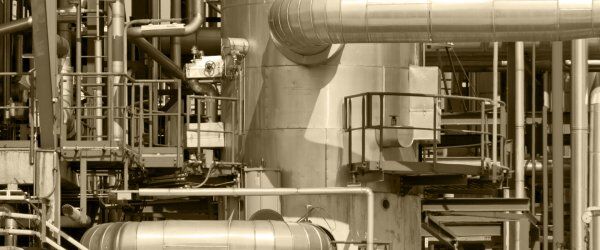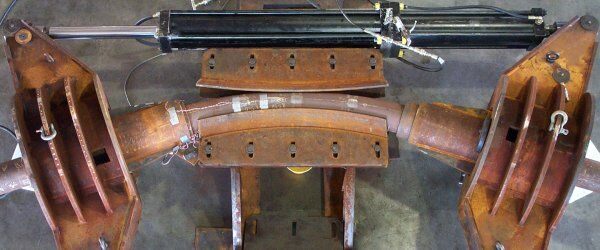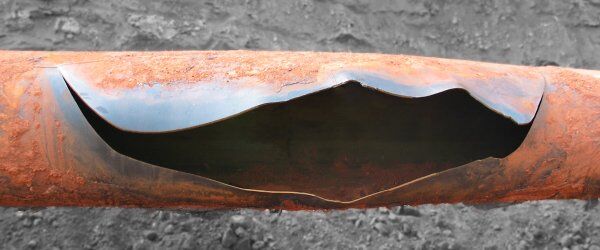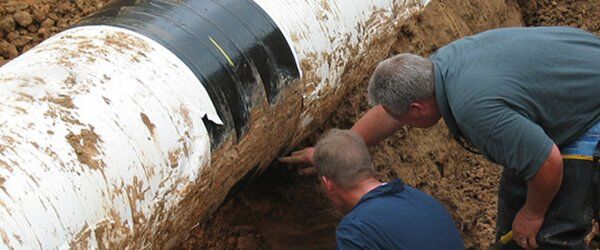We provide comprehensive analysis and testing assistance to solve vibration issues in pipelines and piping associated equipment including pumps, compressors, valves, and hydraulic units.
Analyzing Vibrations in Pipelines and Facilities Piping
Vibrations and transients can occur in pipelines and facilities piping that can result in high stresses or fatigue. Vibration issues can often be difficult to diagnose and correct. A common cause of vibrations in pipelines and piping systems is periodic forcing from equipment such as pumps and compressors. These vibrations can cause high noise levels and lead to fatigue damage and piping failure.
Additional causes of vibration include:
- Valve Noise – generated due to high energy dissipation or cavitation.
- Resonant Acoustic / Fluid Dynamic Coupling – high vibration amplitudes that can lead to rapid fatigue issues.
- Turbulence Induced Vibration – flow turbulence that can generate fluctuating pressures that can lead to Flow Induced Vibration.
- Vortex Induced Vibration – occurs due to an interaction between an exposed section of pipe and the flow of water or air around it.
We employ a combination of measurements and modeling to analyze the source or potential for vibrations, and to predict the pipe vibration amplitudes and stresses.
Computational Modeling of Fluid Transients and Water Hammer
While many piping systems operate in a steady state manner, all experience transients at least occasionally, due to startups, shutdowns, and changes in demand. Transients can result in high and/or low pressures in the pipeline. Such transient pressures are more often problematic in liquid service than gas due to the higher densities.
Shock resulting from the sudden change in velocity of a fluid is commonly referred to as “water hammer”, though a more general term is “hydraulic shock”. Shocks can occur due to either starting or stopping the motion of a column of fluid.

The consequences of these types of events vary in terms of possible damage risk to components and equipment, and in terms of the risks to personnel. A water hammer event can result in:
- Catastrophic containment failures, e.g., pipe ruptures and pump casing failures
- Component and instrumentation damage to e.g., valves, rupture disks, pressure gauges and heat exchangers
- Flange leaks, ruptured seals, accumulation of fatigue damage
- Damage to supports and restraints, jumping pipes
- Noise and vibration without damage
Our engineers have the expertise to analyze local transient pressures and the forces on the piping and supports that will result from hydraulic shock events.
Vortex Induced Vibration Assessments and Exposed Pipeline Spans
Managing pipelines having unintended free spans requires an engineering assessment of the current conditions as well as ongoing monitoring, since continued erosion can further increase the span length. In addition, spans carry a significant risk of failure from static loading, vortex-induced vibration (VIV), potential debris impact, and/or buckling.
Our engineers use both analytical methods and finite element methods to evaluate pipeline spans. The benefit of the analytical methods is that they use relatively simple inputs and that they can be applied to a large number of spans on the same pipeline so that you can do one calculation to apply to a number spans. Therefore, it can be used as a screening method to see which of your pipelines spans needs further evaluation.
Pipe Stress Calculation and Monitoring for Blasting and Construction Activities
In order to increase capacity, operators are often required to add pipelines to existing rights-of-way, often close to or between existing pipelines. In these cases, overly-conservative blasting criteria can result in significant expenses and delays. It is important for operators to develop blasting criteria that do not overly restrict activities while staying within risk tolerance limits.
At Stress Engineering Services we have performed a variety of blasting and construction related testing programs to measure the strains and then expertly analyzed the validity and conservatism of standard blasting stress models for these conditions. We can assist with developing blasting plans as well as instrumenting and monitoring pipe stresses during blasting.
We can also provide assistance with analyzing and monitoring stresses associated with construction activities such as road crossings, equipment loading, and pile driving in the vicinity of a pipeline.
Small Bore Branch Connection Vibration Assessment and Analysis
Vibrations of small-bore connections (SBC) branching from large diameter piping or vessels are a common problem. These vibrations are often associated with branch piping that is 2 inches in diameter or smaller and typically occur near pumps, compressors, or valves.
Resonances of small bore piping near an SBC can cause high alternating stresses and result in rapid fatigue failures. These failures often manifest themselves at local stress concentrations such as welds or threaded connectors. While fatigue failures are most often associated with SBC vibrations, other failure modes such as vibrational loosening of flange bolts or fretting from external contact are also possible.
Another common cause of failures at SBCs is shell mode vibrations of the main pipe. Unlike bending modes, shell modes involve deformation of the cross-section of the piping. Our engineers have experience with both measuring and modeling shell mode vibrations.
Engineering Capabilities
At Stress Engineering Services, we have advanced technology as well as a highly knowledgeable staff that can tackle your toughest technical problems.










